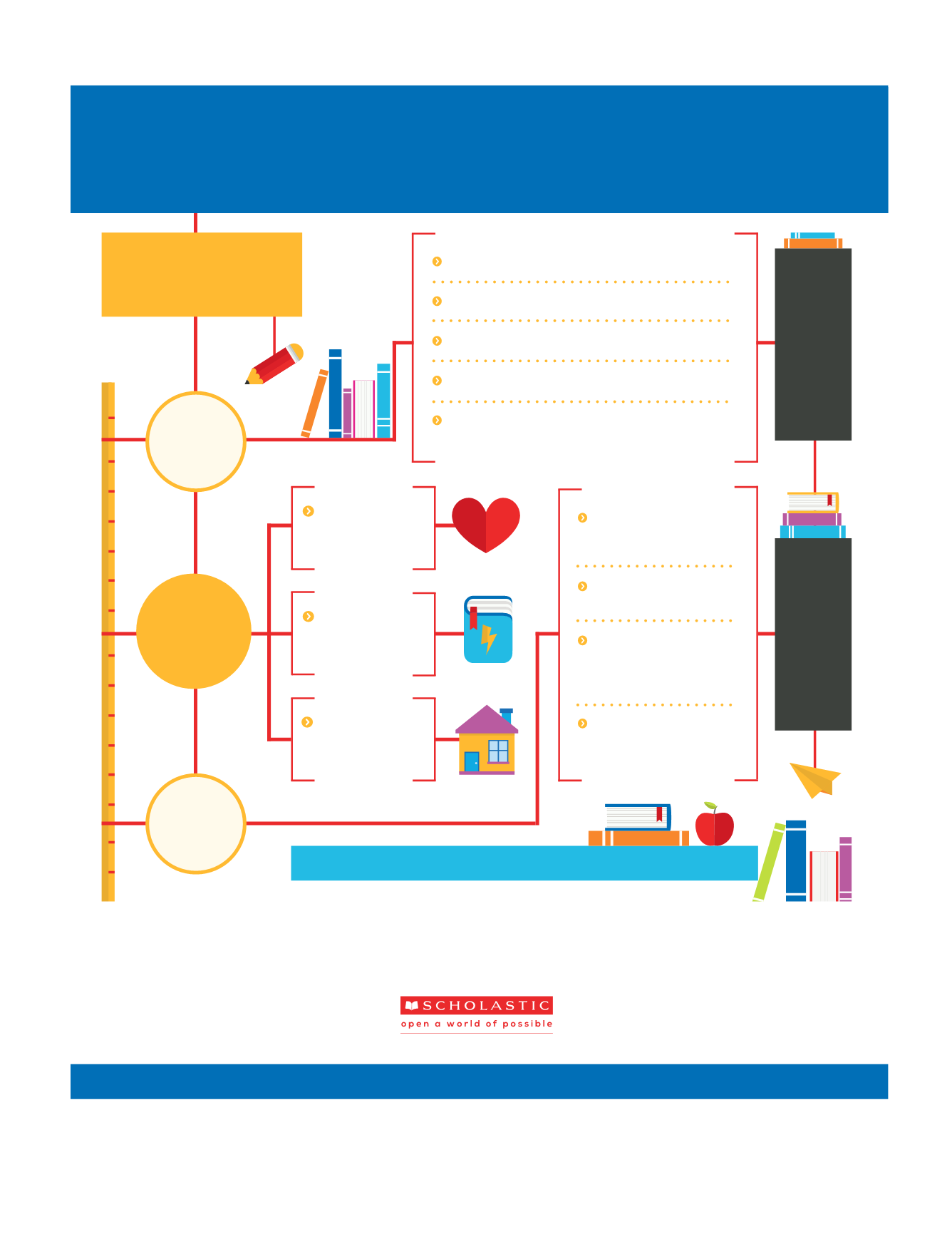

Read independently
during the school day
Read more
books
after
being
introduced
to
ebooks
Live
in a home
with 150 or more
books
Know their
reading level
Have
parents who help
them
find books
and
encourage
reading for fun
in specific ways
(learn how on page 23)
Have been
read aloud to
5–7 days a week
before
entering
kindergarten
Currently be
read aloud
to at home
Want books that
“let me
use my imagination”
and
that
“have characters
that
look like me”
Not go online
using
a computer
for fun
5–7
days a week
Rate themselves
highly as
enjoying reading
Strongly believe
reading for fun
is important
Have
parents
who are
frequent
readers
These kids
read an
average of
39.6
BOOKS
per year vs.
4.7
by
infrequent
readers
These kids
read an
average of
43.4
BOOKS
per year vs.
21.1
by
infrequent
readers
To determine what predicts kids’ reading frequency, more
than 130 measures were included in a regression analysis.
Kids
Ages
12–17
Kids
Ages
6–17
For each age group shown,
frequent readers are more likely
than infrequent readers to:
Kids
Ages
6-11
What Makes Frequent Readers:
The Most Powerful Predictors
The Kids
&
Family Reading Report™: Fifth Edition
Results from a nationally representative survey of 2,558 parents and children including 506 parents of children ages 0–5; 1,026 parents of children ages 6–17, plus one child age 6–17
from the same household, conducted August 29, 2014 through September 10, 2014, and managed by YouGov. Frequent readers are defined as children who read books for fun 5–7 days per week.
Whereas infrequent readers are defined as children who read books for fun less than one day per week. See the full methodology at
scholastic.com/readingreport. scholastic.com/readingreport















